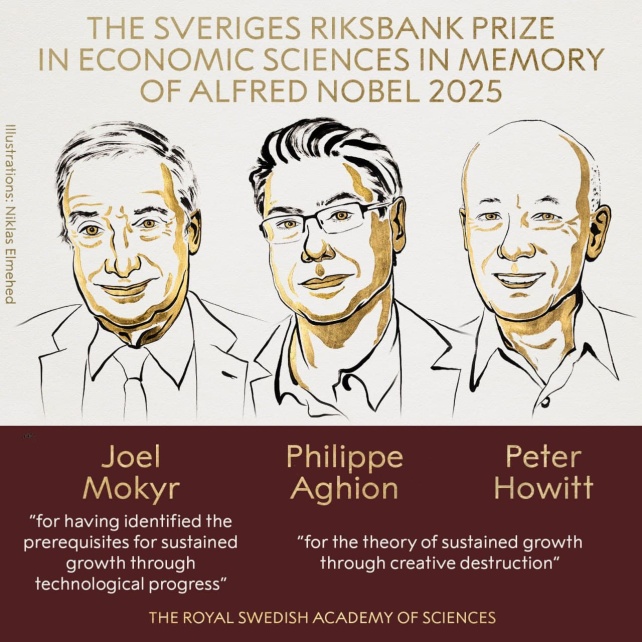
IEM TSU Expert on the 2025 Nobel Prize in Economics
On October 13,the names of the 2025 Nobel Memorial Prize laureates in Economic Sciences in Memory of Alfred Nobel were announced. The prize was awarded to Joel Mokyr, Philippe Aghion, and Peter Howitt "for explaining innovation-led economic growth." What does this formulation by the Nobel Committee mean? Ekaterina Soboleva, Associate Professor of the Department of Economics at IEM TSU, explains:
ŌĆö This prize has been awarded for, perhaps, the eternal question of economic science: how does a state become wealthier and what does it live by? Looking into macroeconomics textbooks, we find various models built in an attempt to explain the nature of economic growth. Early models (Harrod-Domar, Solow-Swan) assumed that growth factors (savings rate, technological progress) were given exogenously, i.e. fr om outside the economic system. But this did not satisfy economists, as it was clear that these factors change under the influence of decisions made by economic agents.
It was necessary to find factors that would drive economic growth through internal processes. This gave rise to the theory asserting that economic development is driven not by external impulses, but innovations and knowledge created by the system itself.
As early as the beginning of the 1990s, Aghion and Howitt proposed the model of "creative destruction": this idea became the foundation of the new endogenous growth theory. The essence of the theory is that the emergence of new technologies leads to the abandonment of old ones. Thus, innovative activity generates multidirectional effects. On one hand, innovations allow for the production of final goods to be more efficient than before. On the other hand, the monopoly rent arising from the patent protection of innovations will be destroyed by the next wave of innovative activity. Therefore, firms might take their time to bring new inventions to market.
Meanwhile, J. Mokyr, studying the rapid economic development of Europe from the Age of Discovery to the Enlightenment, demonstrated that, among other things, this was a period of rapid accumulation and dissemination of knowledge. European intellectuals competed for the patronage of the powerful by proposing original ideas,which are explaining the structure of the world. And, crucially, institutional frameworks emerged that facilitated the spread of knowledge: it moved beyond academic circles and flowed into the sphere of production, wh ere entrepreneurs adopted and valued it as means to outperform competitors. These processes allowed Europe at that time to make a giant economic leap forward and surpass China and the Arab countries.
We can extract valuable lessons from these studies: when a society encourages the dissemination of new knowledge and creates institutional frameworks for the free exchange of ideas, their critique,as well as examination, this translates into economic growth and an increase of the nation's prosperity.
It is worth noting that the Nobel Prize has been awarded for research on economic growth before: in 1971, it was received by Simon Kuznets "for his empirically founded interpretation of economic growth," and in 2018, by Paul Romer "for integrating technological innovations into long-run macroeconomic analysis.ŌĆØ
